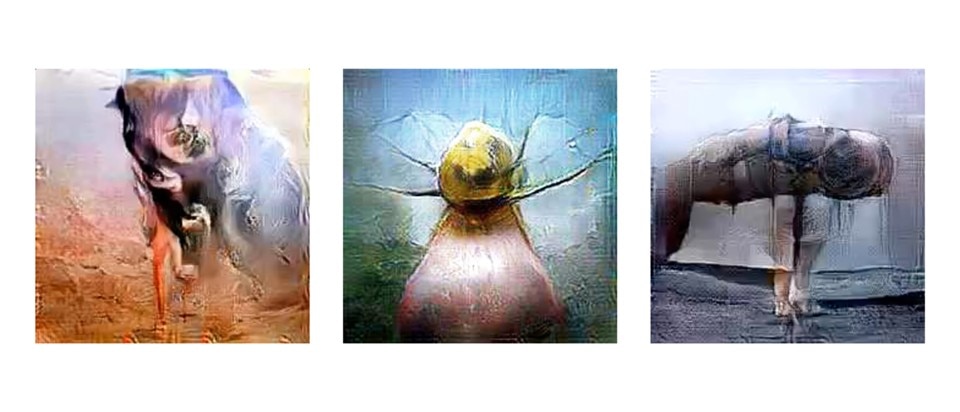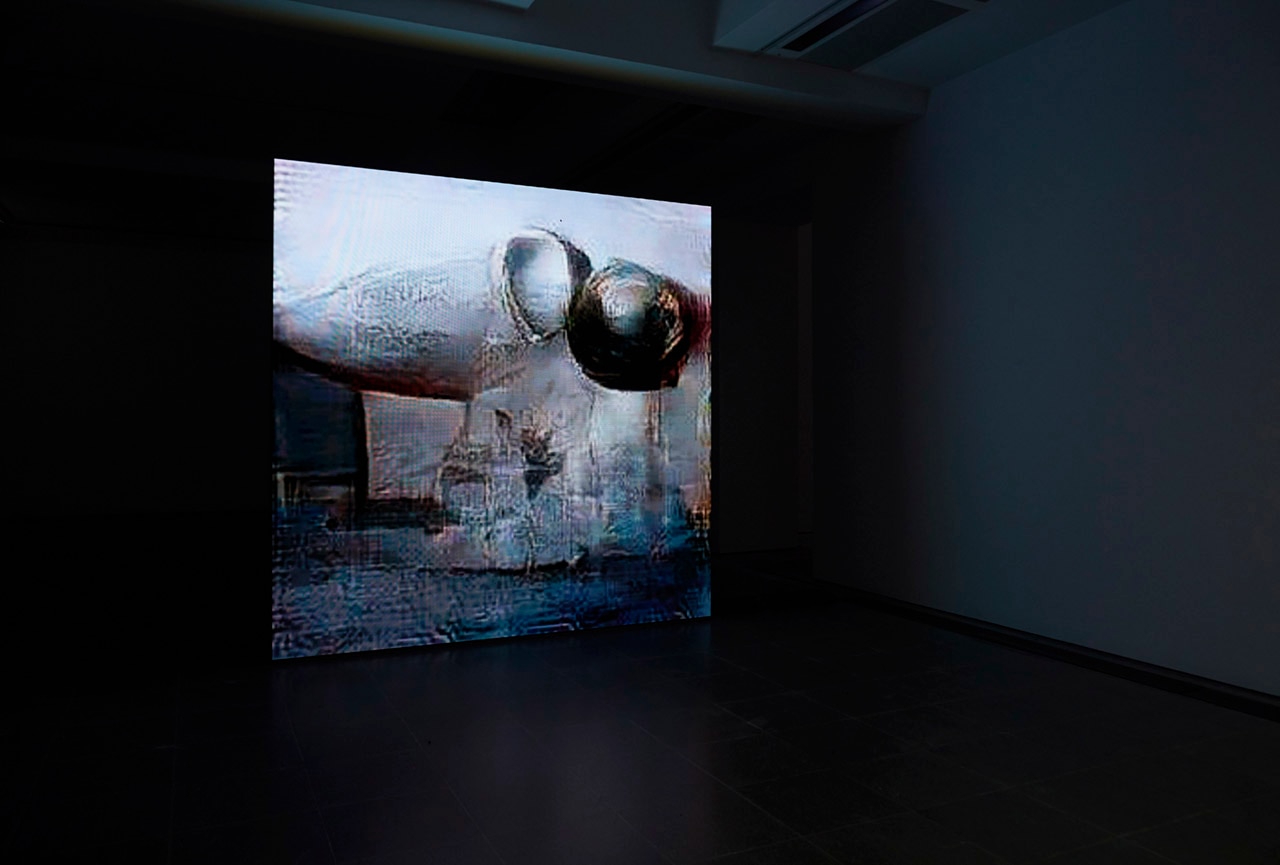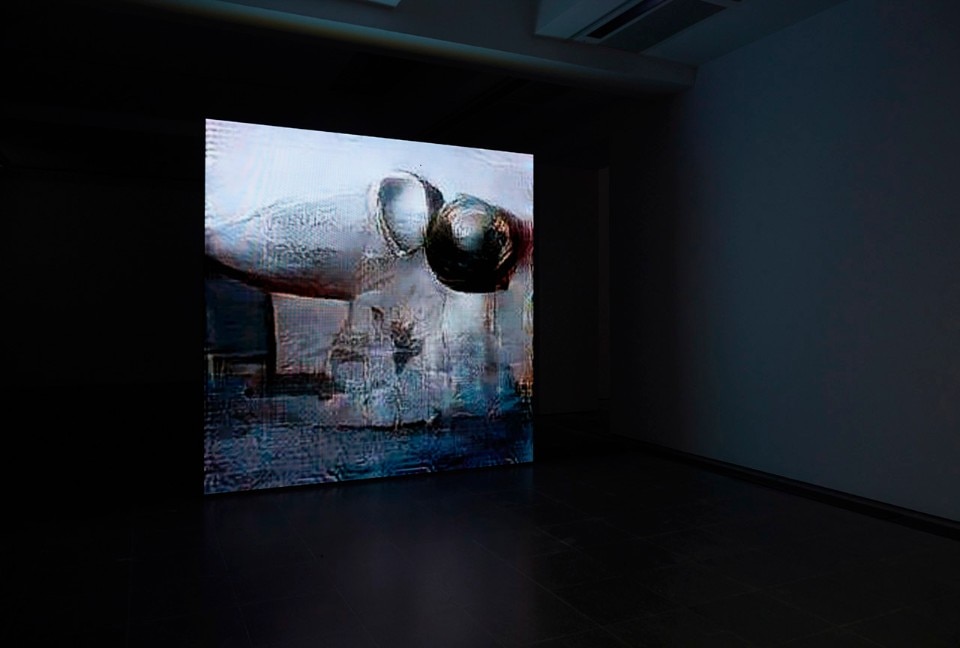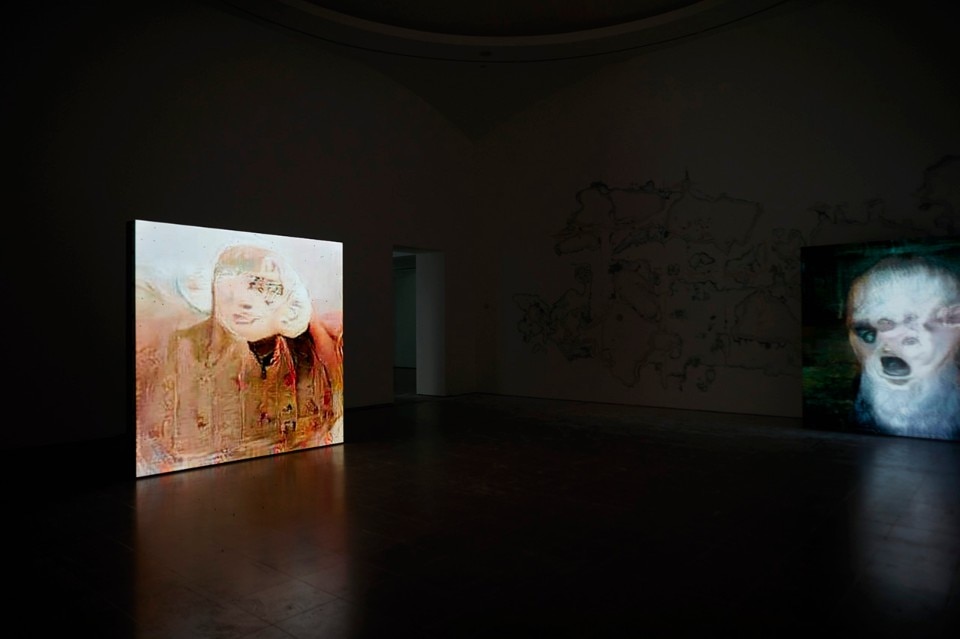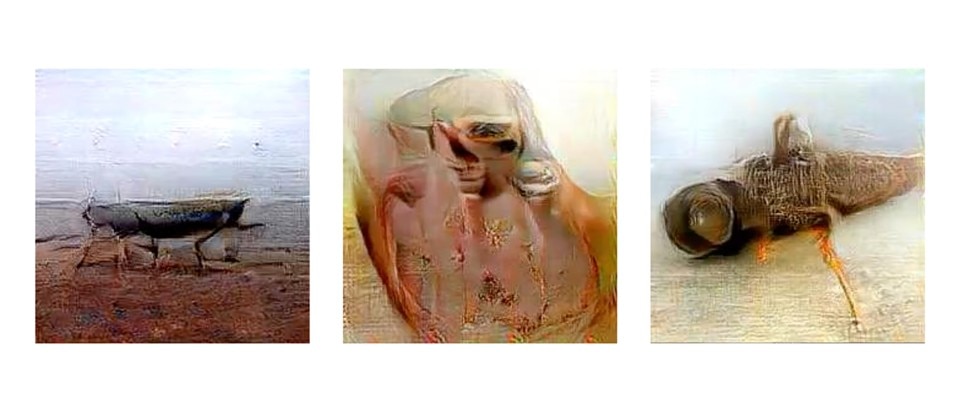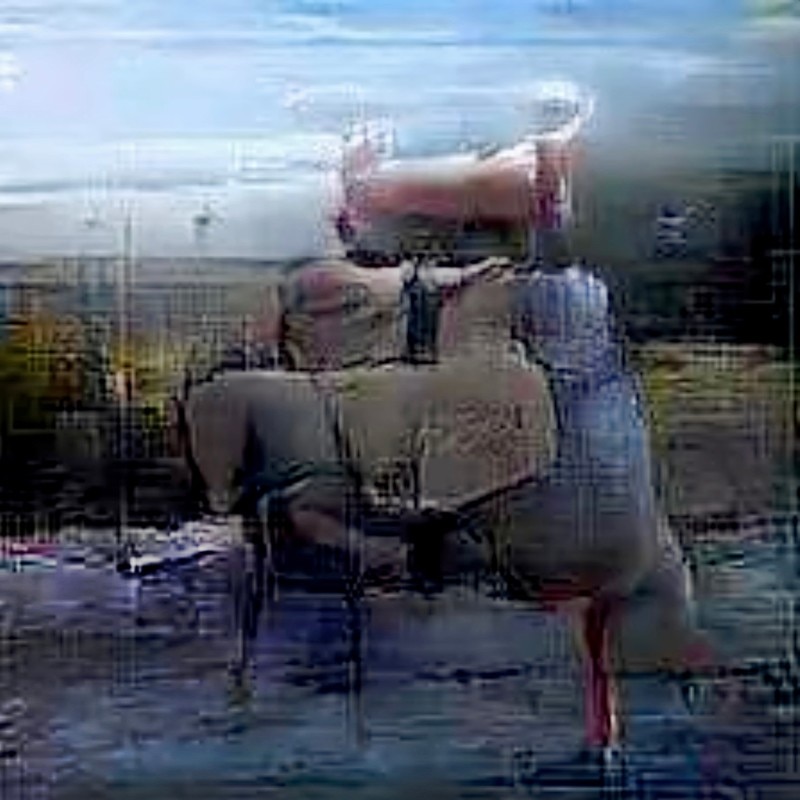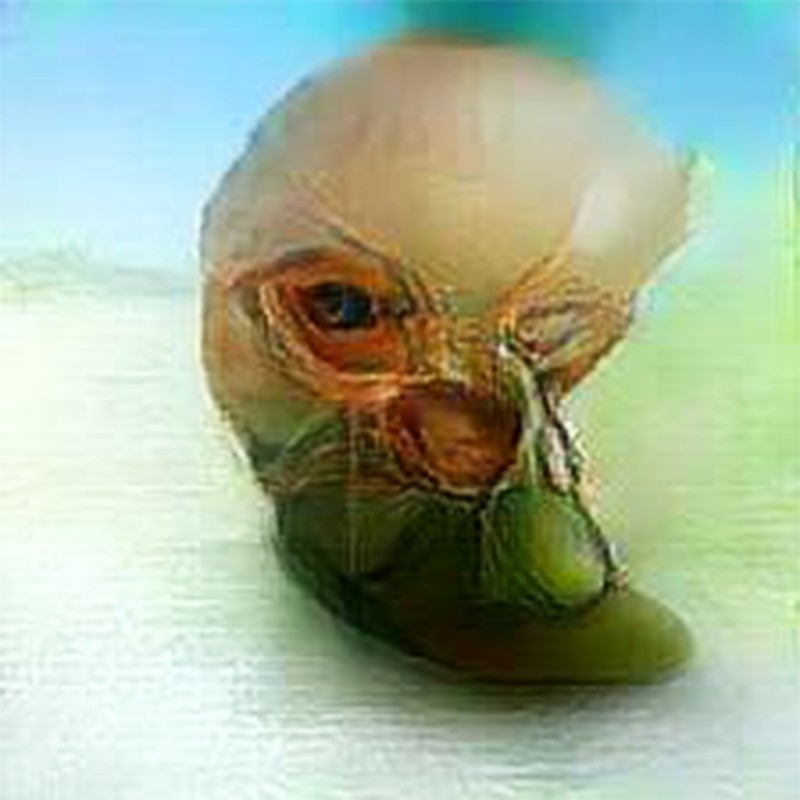The recent intervention by Pierre Huyghe at the Serpentine Gallery in London generates a strong feeling of disturbance.
The polysemic and sensorial setup that for some time has been a characteristic of the projects by the French artist has come in a period of exponential growth. The word Umwelt is German for environment. The term could not be more appropriate, not only for the design of this experimental model, but also for designing a different form of adhesion to that which surrounds the observer in this space. A demanding experiment more than an exhibition.
There is a strong temptation to cross the exhibition rapidly, due to the presence of an intrinsic rhythm to which the large LED screens pulse, leading one to imagine a pre-set speed. There are no clear images, but rather highly colourful signs. They appear, overlap and accumulate like the frames in stop-motion animation. They are the response to a precise plot for an investigation of the world. They are, to all intents and purposes, a theoretical model. They visualise the capacity of the human mind to remember facts and sensations, formalising the theory of the engram.
The cerebral activity of a subject was captured as they concentrated on simple elements that they had been asked to think of. Those thoughts, or “mental images”, are reconstructed in the depths of our neural network.
The beauty of this work lies in the form of description, in rendering this process almost tangible. The generative capacity of our memory is constantly engaged in organising reality. Pierre Huyghe has for some time accustomed us to the idea that art can no longer disregard the descriptive capacity of science, immersing us in an expansive narration.
This new itinerary joins the long list of his attempts. A form of research based on the previously unavailable possibility to time after time contemplate a new organisation of the shape of the world. In his interventions, as well as the act of faith that goes beyond the logic of site-specific art, even the spectators are forced to expose themselves to a specific procedure, a kind of conceptual liturgy. Procedural pleasure lies at the heart of this practice. In the central gallery of the Serpentine, the exhibition evolves on these same premises. It is inhabited by a colony of 50,000 flies which grow and reproduce, nourished with water and sugar.
How would these images seem if seen through their eyes? These are dipterans, a species native to the UK, blue bottle flies which are completely harmless to humans. Here they live their entire life cycle, grouping on the screens in colonies and obviously creating changing patterns on the screens and walls. Just like us, their presence becomes tautological, we all align. The insects on the screens, attracted by the light, and us before them. Another complex scene which could quite easily exist beyond the concept of the exhibition. We have entered a complex metasystem inhabited by an autonomous ecosystem. On the floor, the dust from the sanded gallery walls reflects the typical indifference for the space which has already been occupied by many artists through classic-style exhibitions. In his (undeclared) retrospective held at the Centre Pompidou in 2013, the captions from the exhibition by Mike Kelly, which had preceded his, were left on the wall. Pierre Huyghe’s art thrives on these positive forms of fragility.
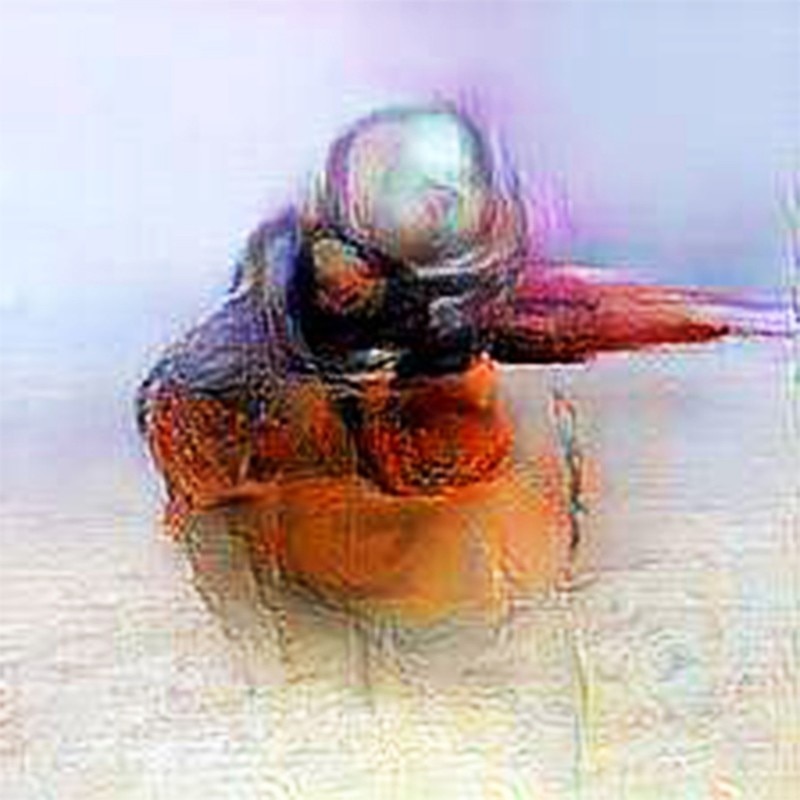
Pierre Huyghe offers us extremely subjective experiences. This was the case in the two most recent editions of Documenta, which offered the chance to walk through gardens full of sculptures, where the statues had beehives instead of heads, or where dogs which seemed to have stepped out of a fairy-tale had fluorescent paws. He had even transformed an abandoned skating rink into a home for bacteria, bees and peacocks.
Time after time, we have admired aquaria with rocks in suspension and crustaceans inhabiting sculptures by Brancusi, or even the panorama of an anthropocene New York from the terrace of the Met. In this new environment, the artist has re-written the engram in a surrealist manner and creates a philosophical scheme of our reactions to the images, once again challenging our convictions.
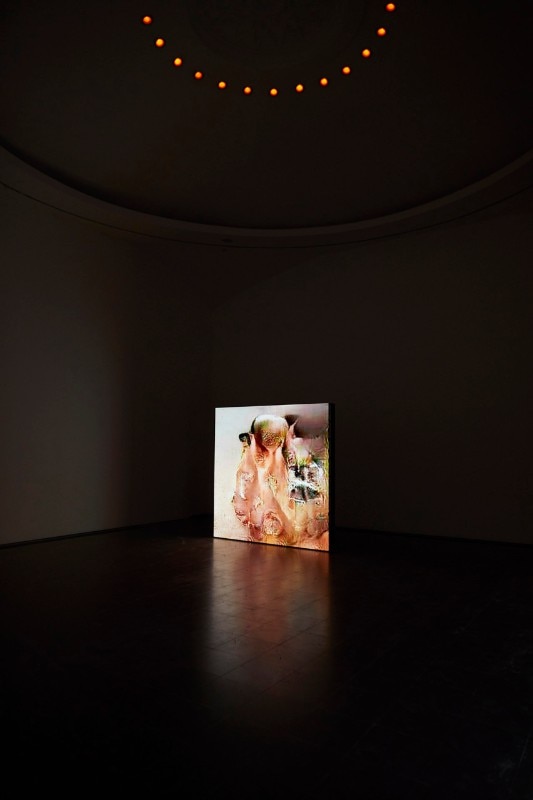
There is a strong temptation to push the neurobiological element at the base of the entire work in a Lacanian direction. A psychoanalytical overtone has been applied to this recent story. The splendid and undefinable images that flow across the screens at the Serpentine have the spirit as their medium, they are polyps of imagination with which we share the space of deployment. They resemble the compulsion of the subject to repeat. This is a shift for Pierre Huyghe from the illusionist forms of the contemporary to a deeper contiguity with the theoretical study of the unconscious. It is evident that what he is trying to do is lead his work towards an almost therapeutic form.
Faced with a number of Renaissance paintings in which trompe l’oeil flies were depicted, the technical ability of the artist became a gradient of reality. This was the only way to shift attention, otherwise focused on the religious content of the painting, to the subjectivity of the artist. Pierre Huyghe is probably asking us if we intend to follow him in this sublime subversion of reality.
- Exhibition title:
- Pierre Huyghe
- Artist:
- Pierre Huyghe
- Curators:
- Rebecca Lewin, Natalia Grabowska
- Design project:
- Turnbull Grey
- Venue:
- Serpentine Sackler Gallery, London
- Opening dates:
- 3 October 2018 – 10 February 2019
- Address:
- West Carriage Drive, London, W2 2AR


